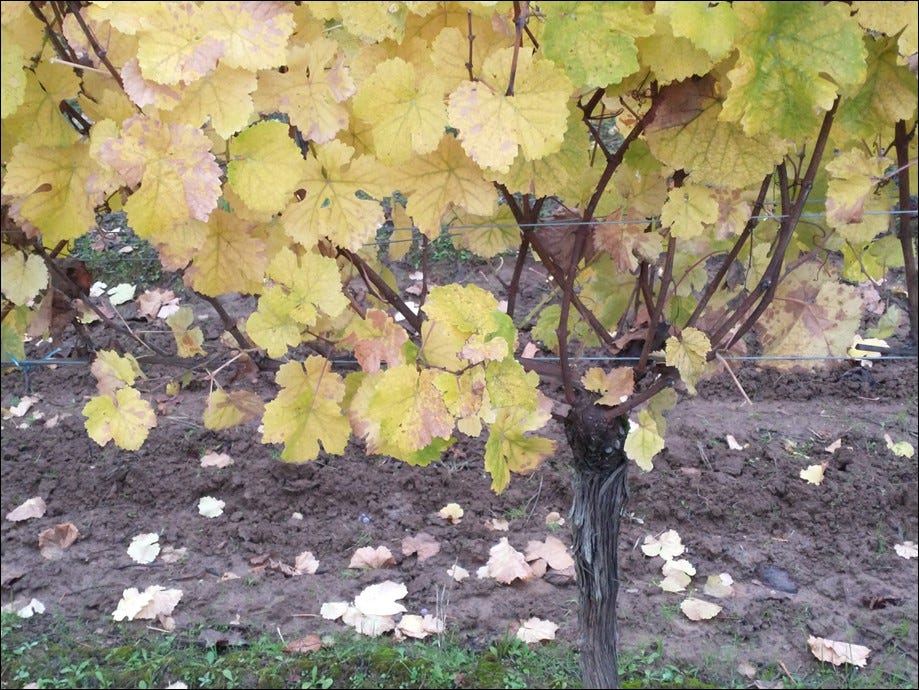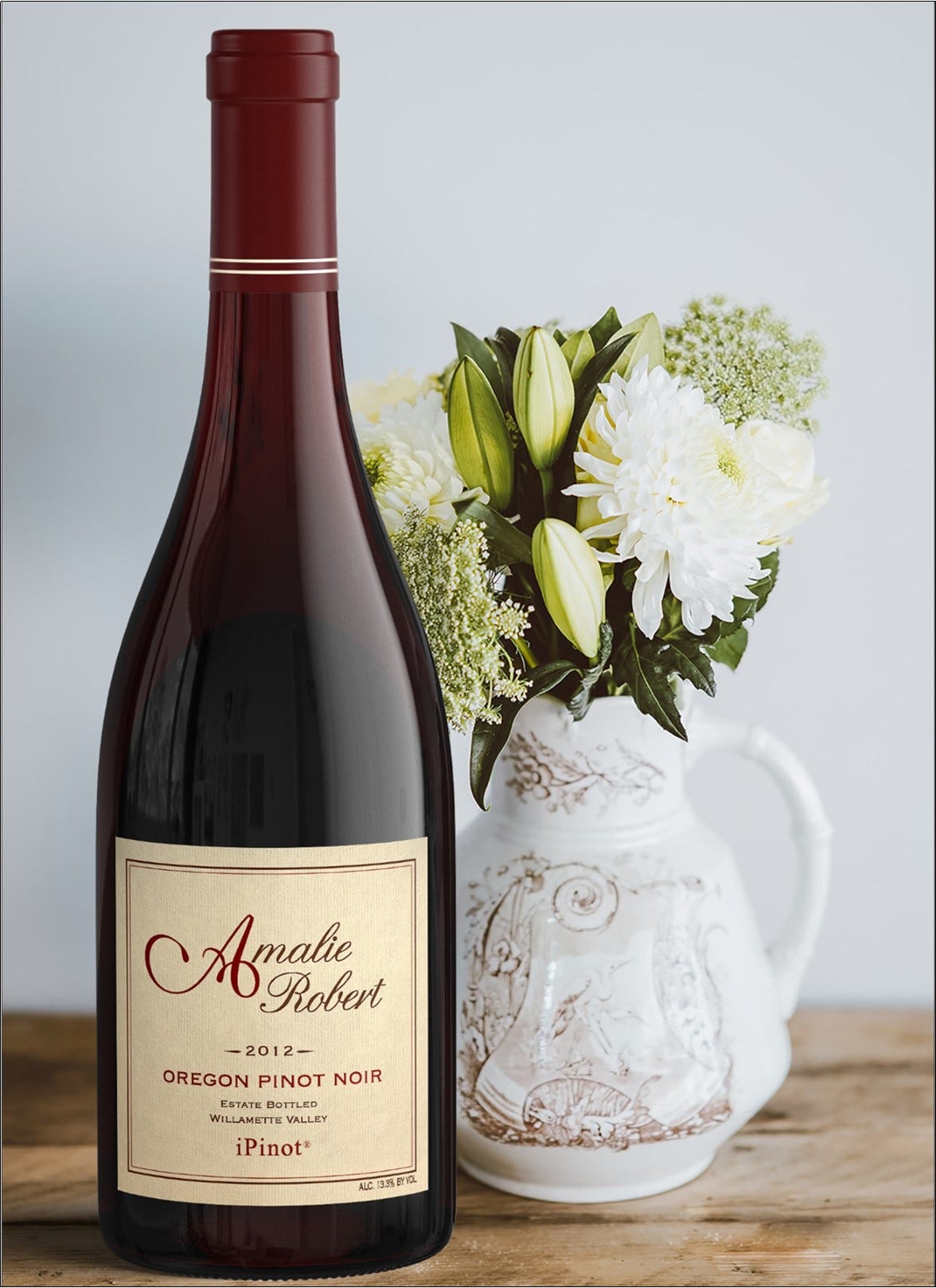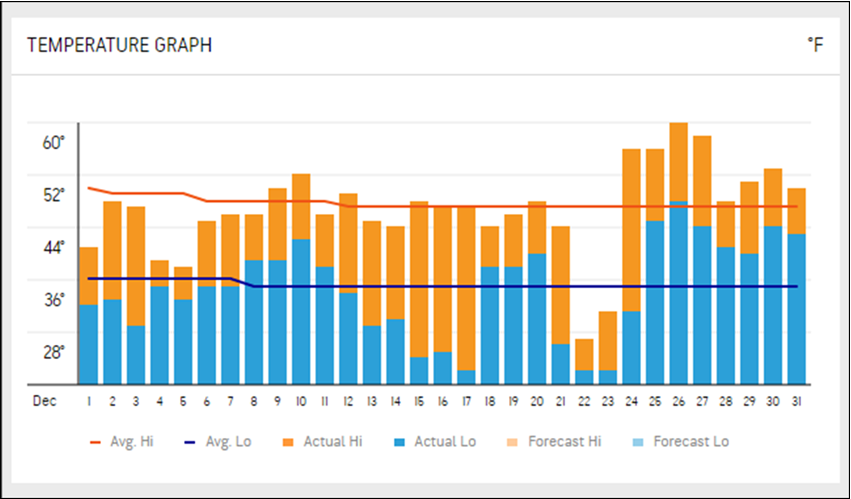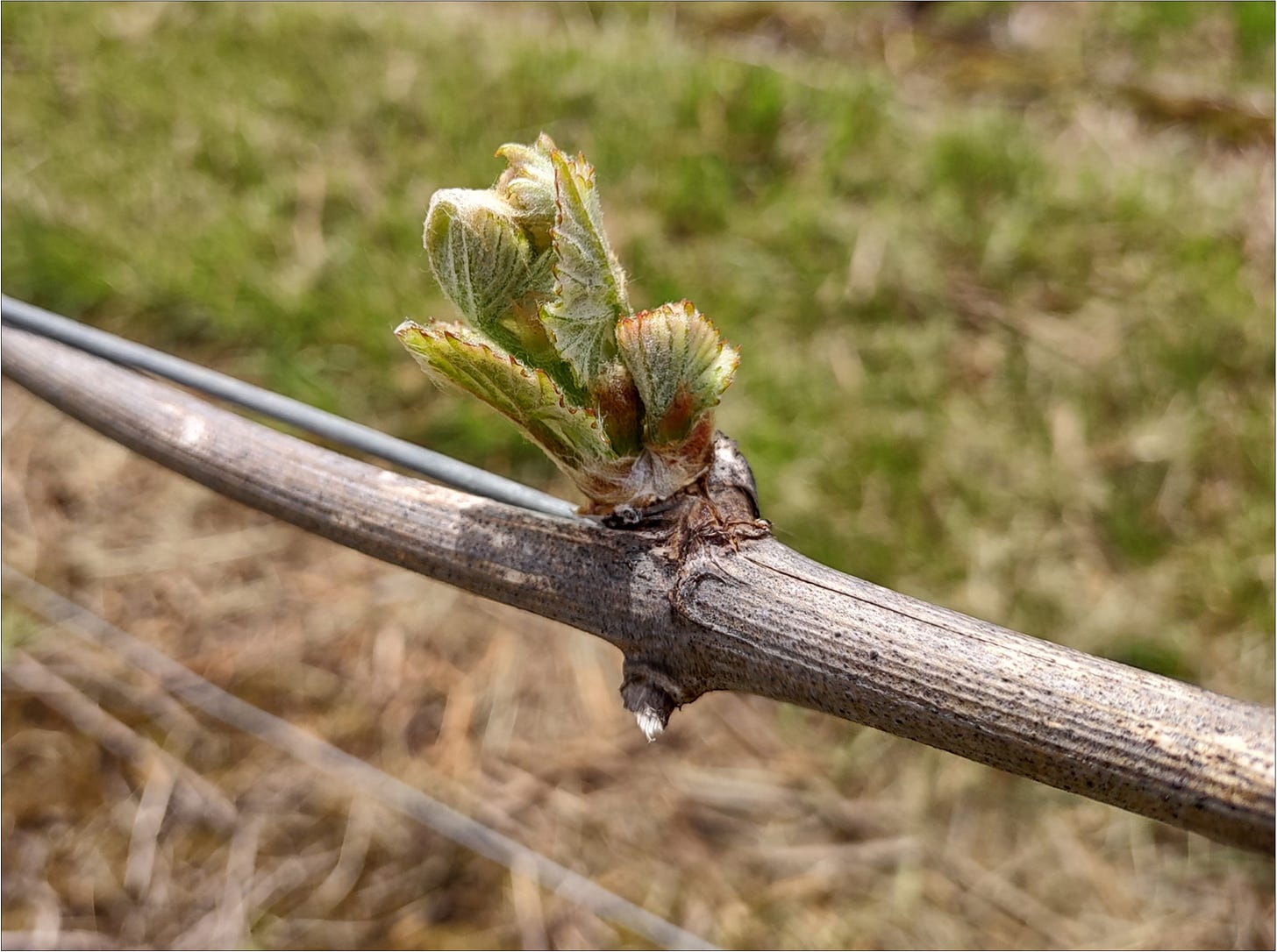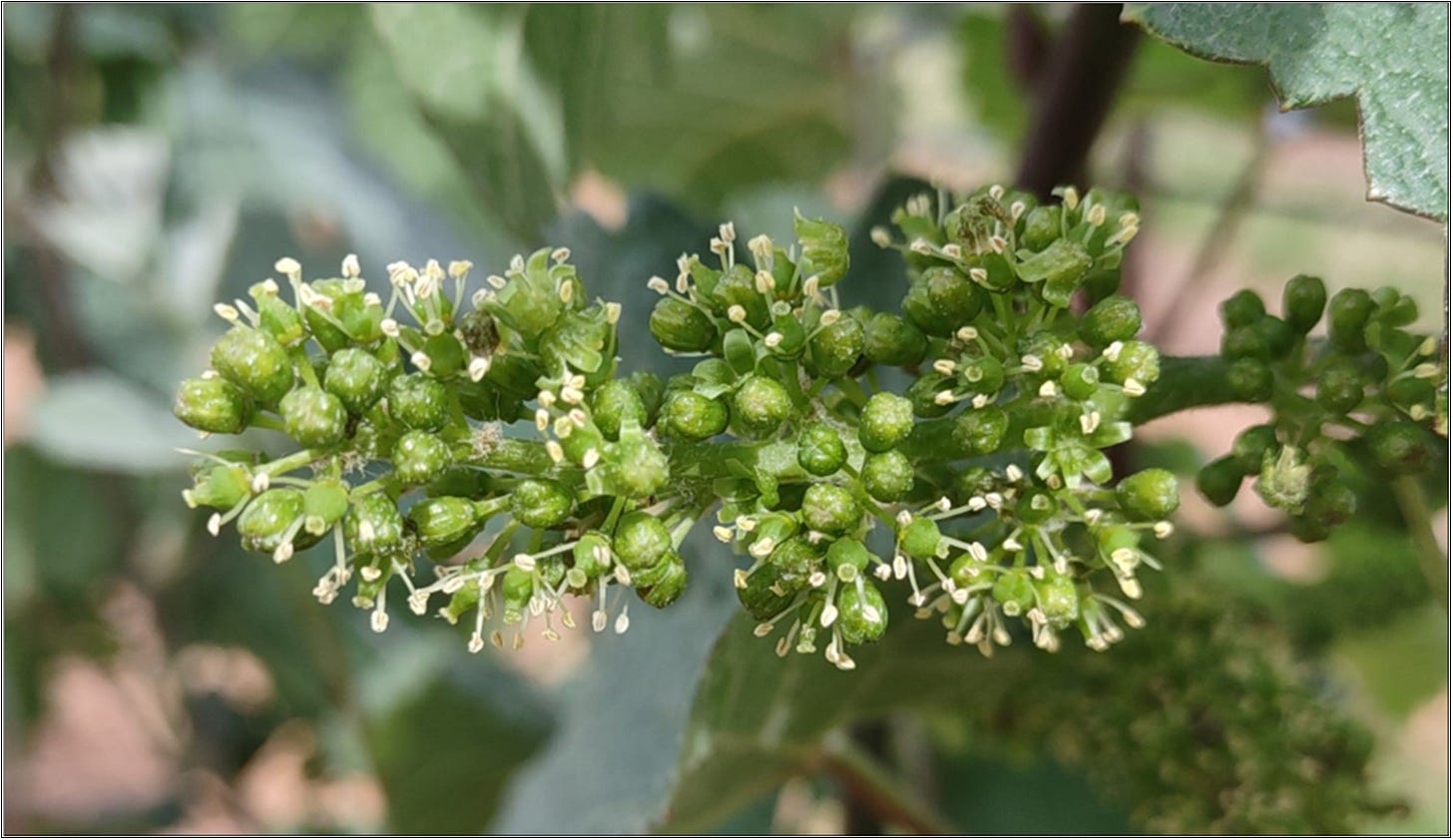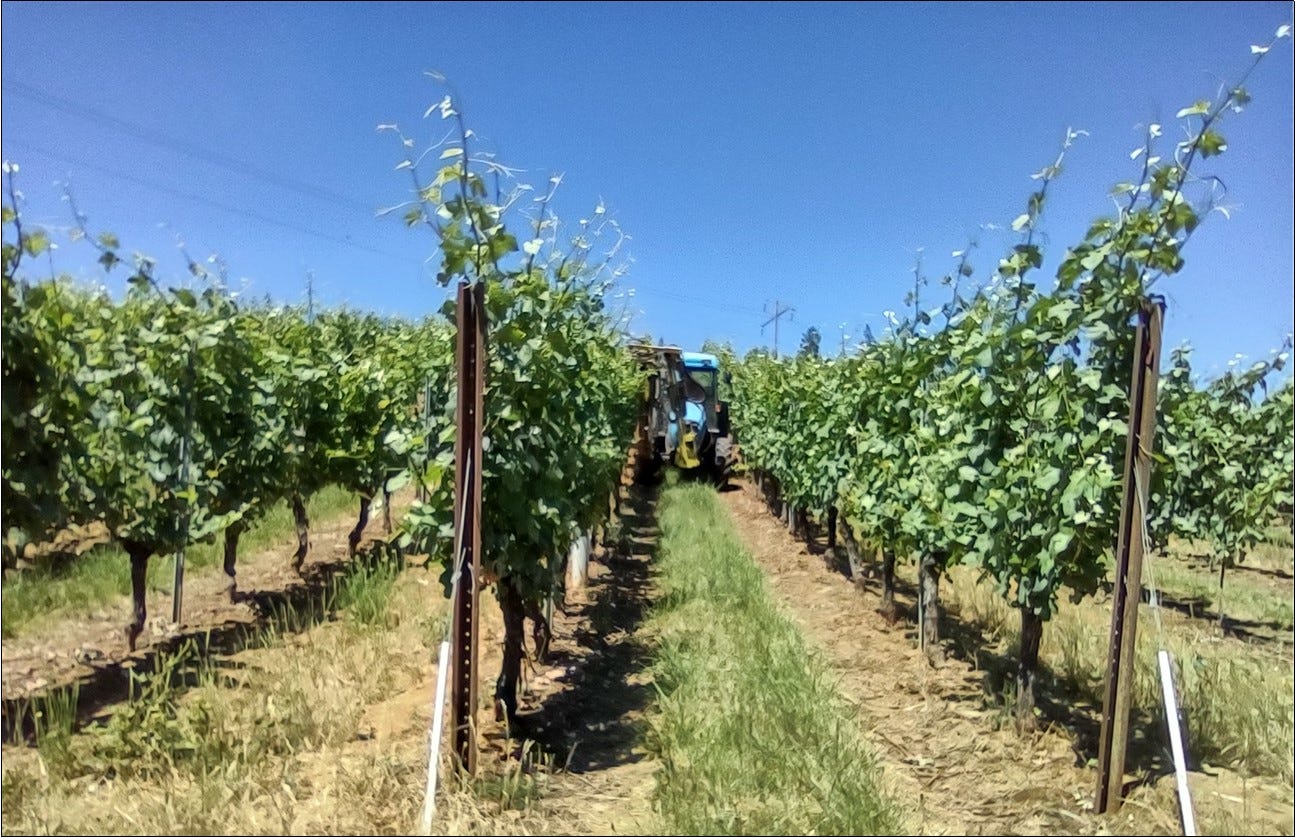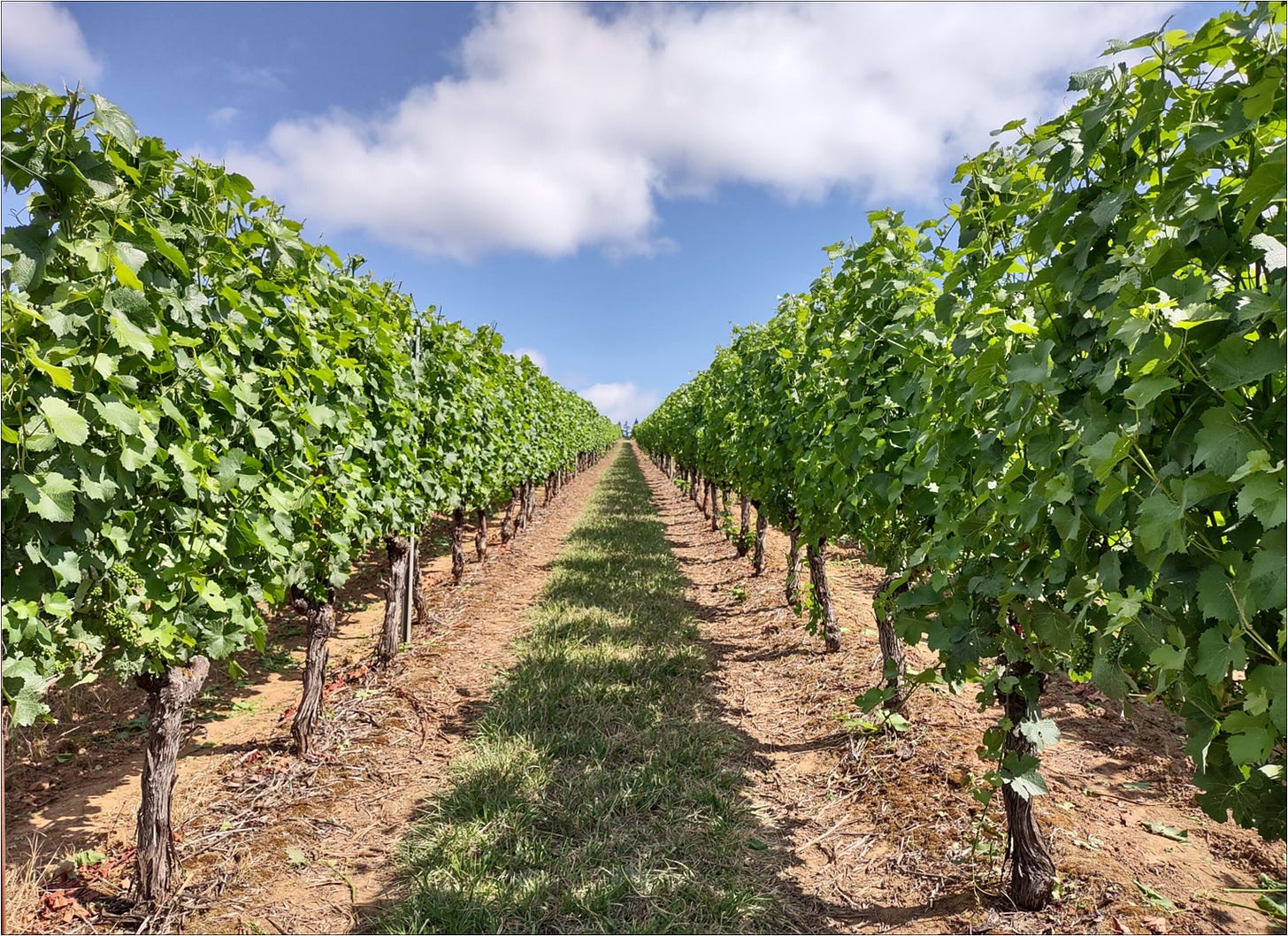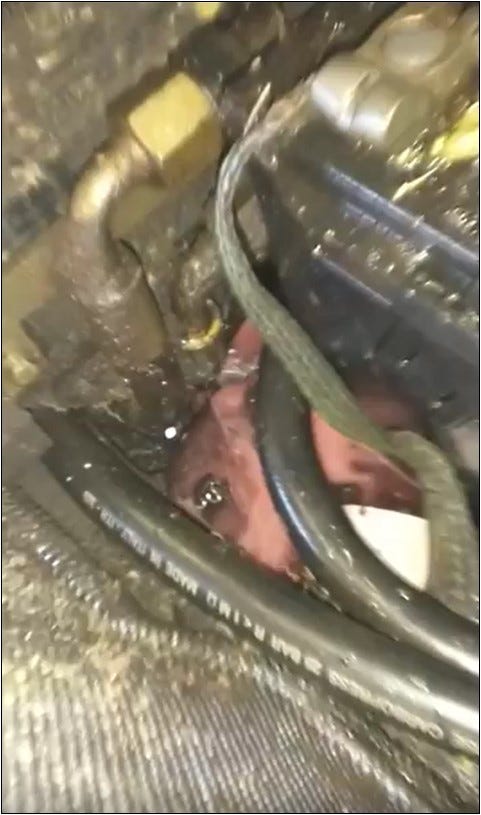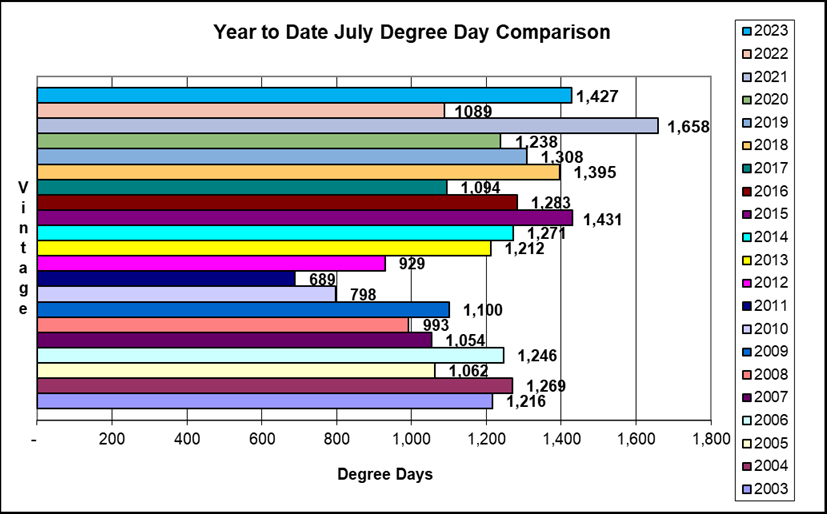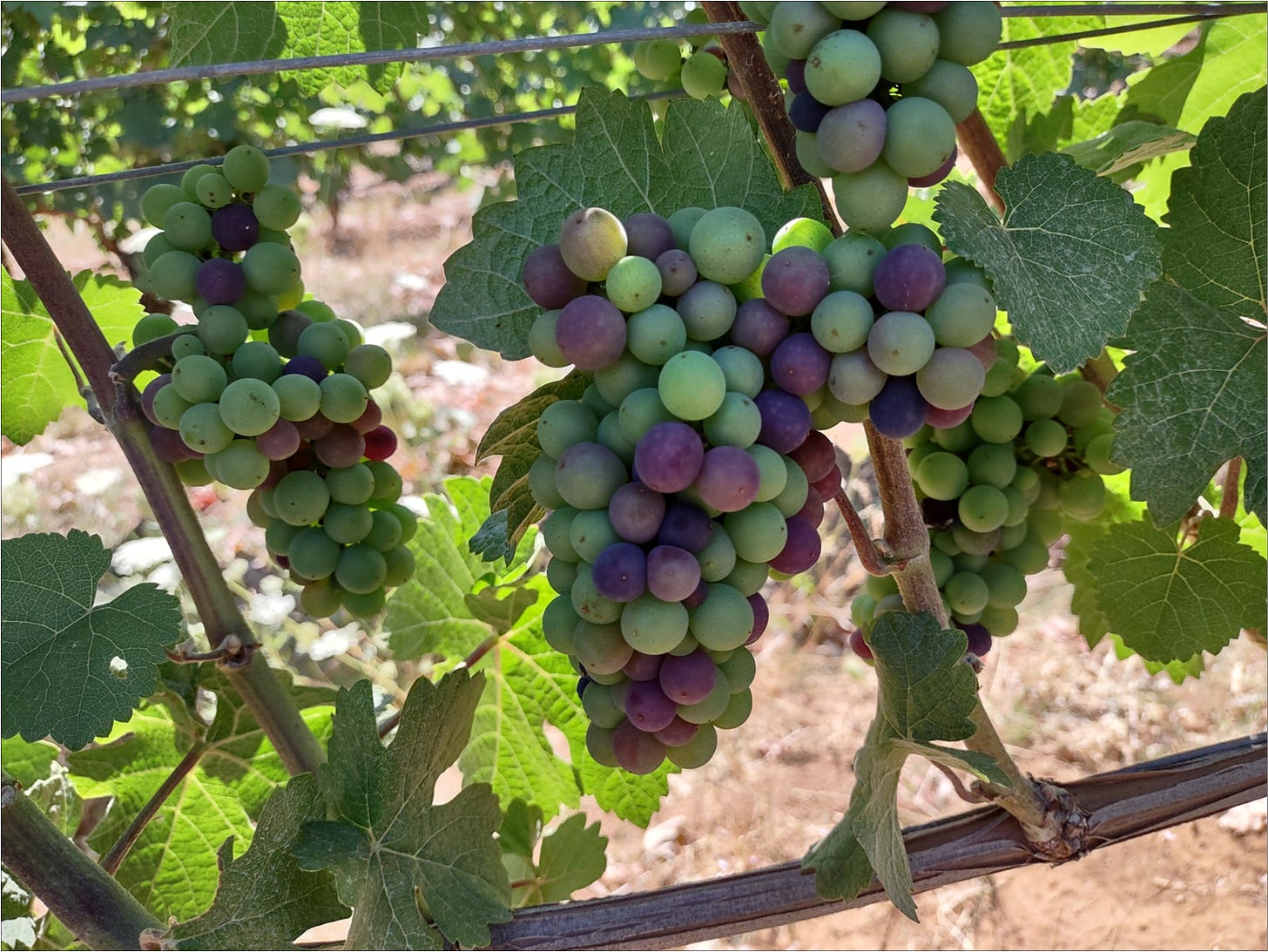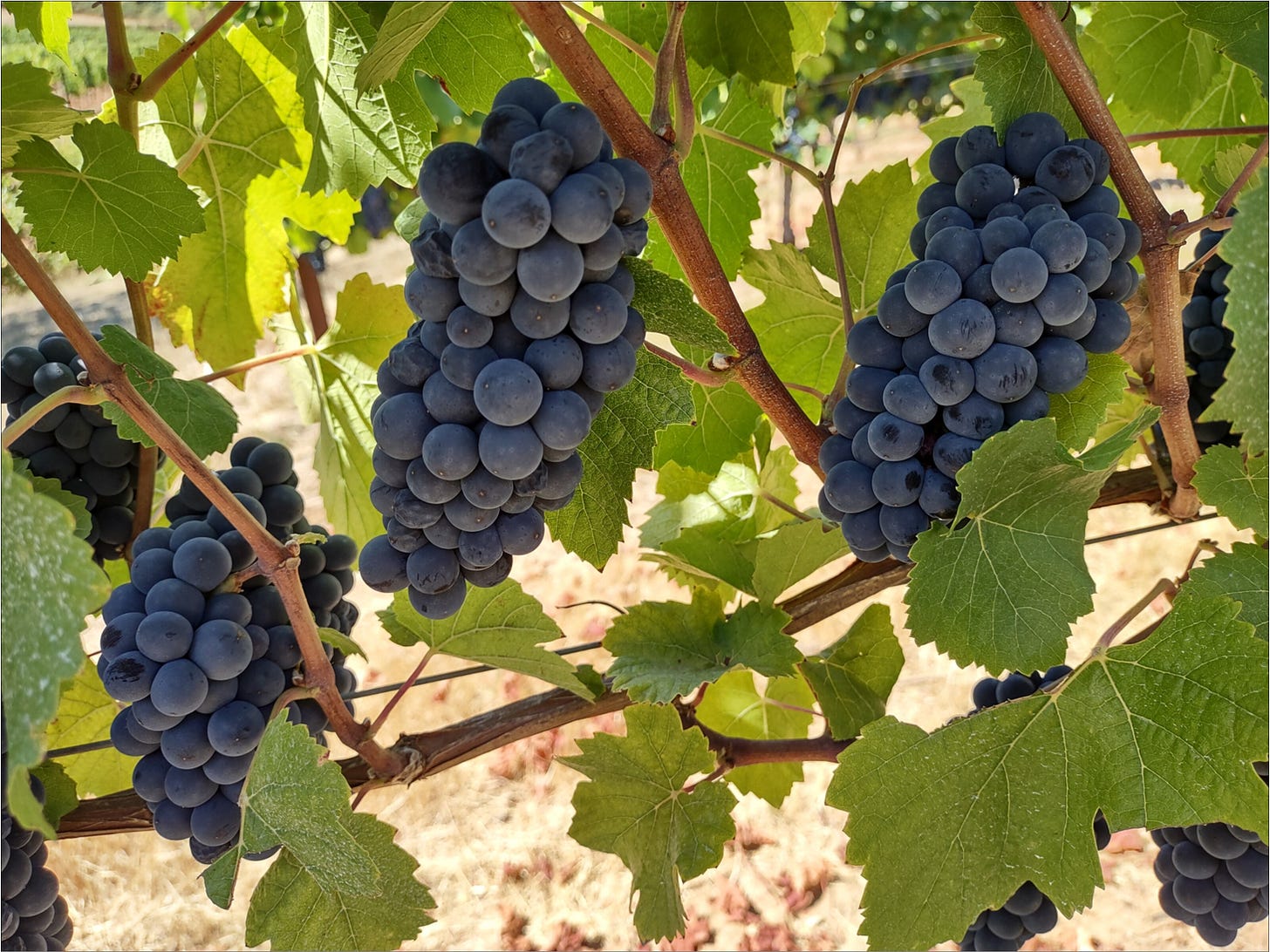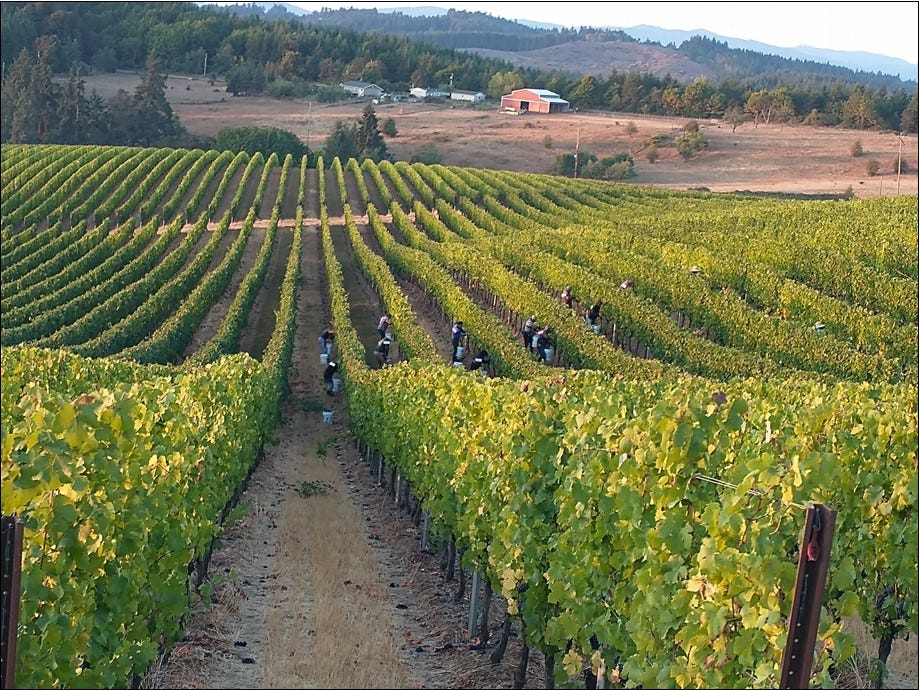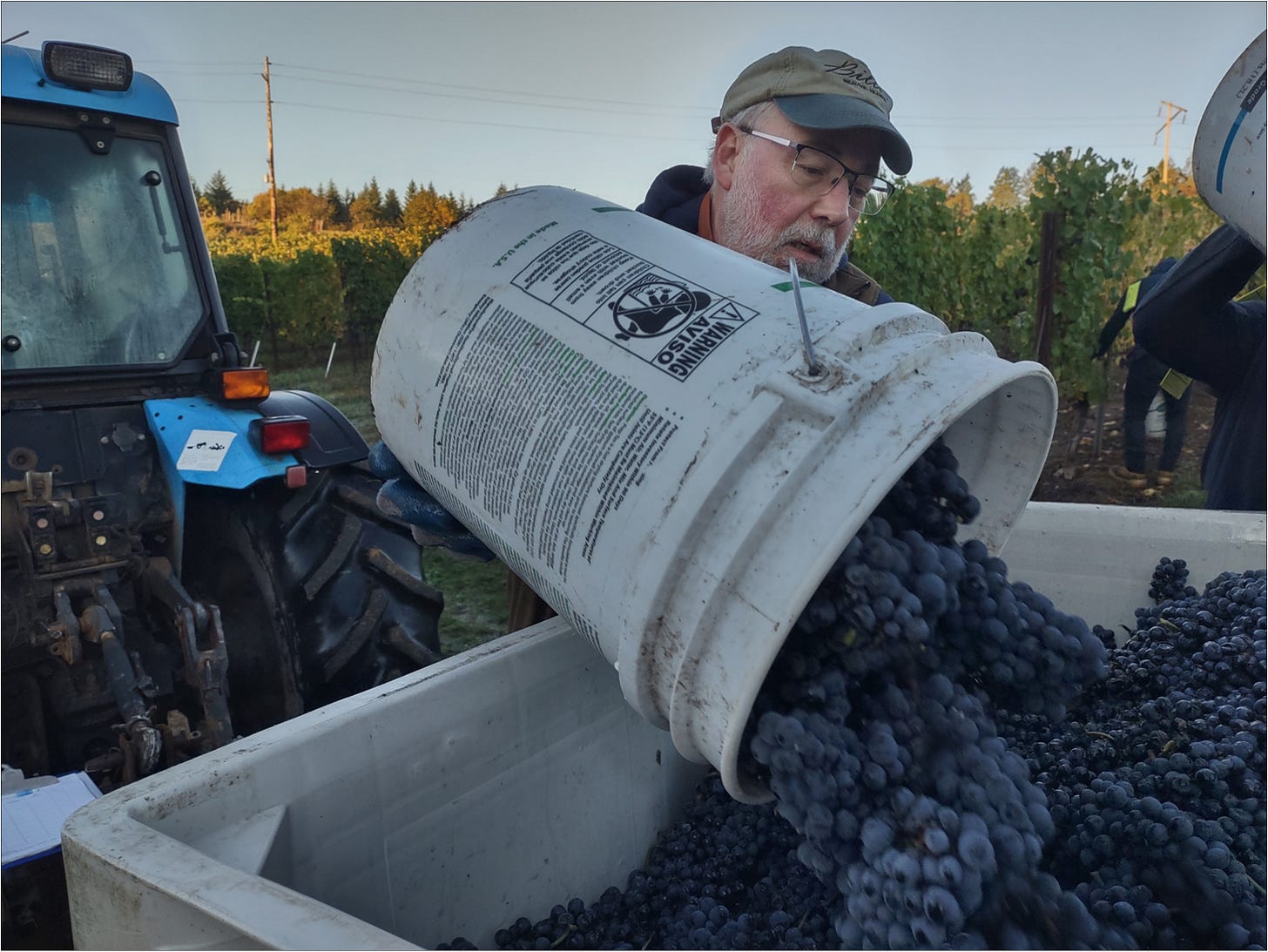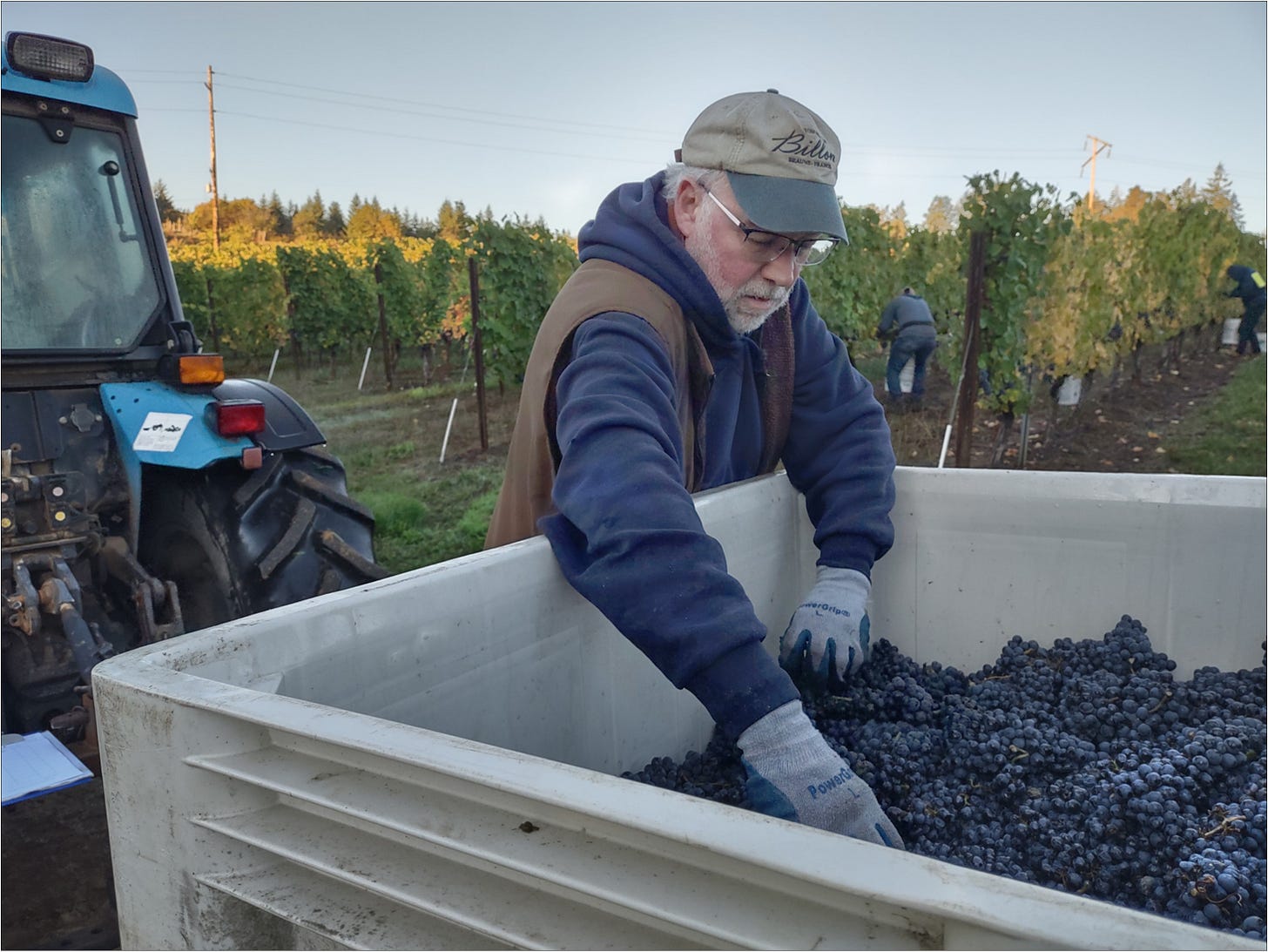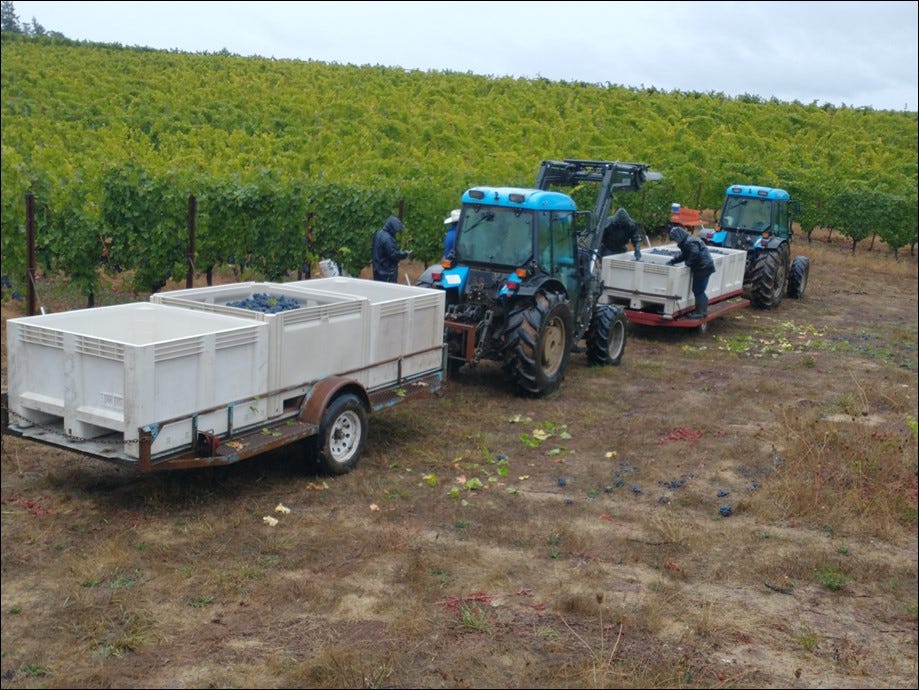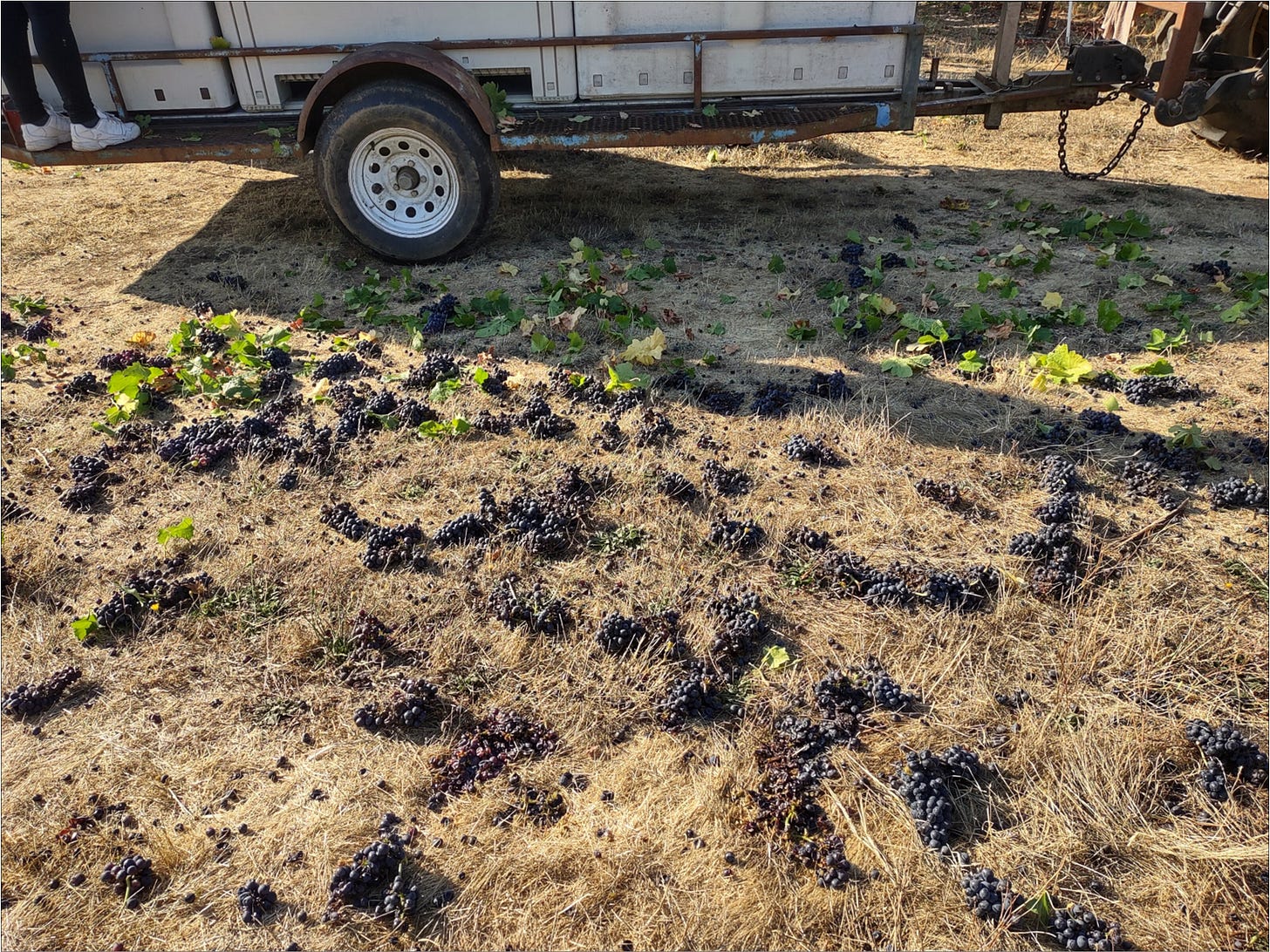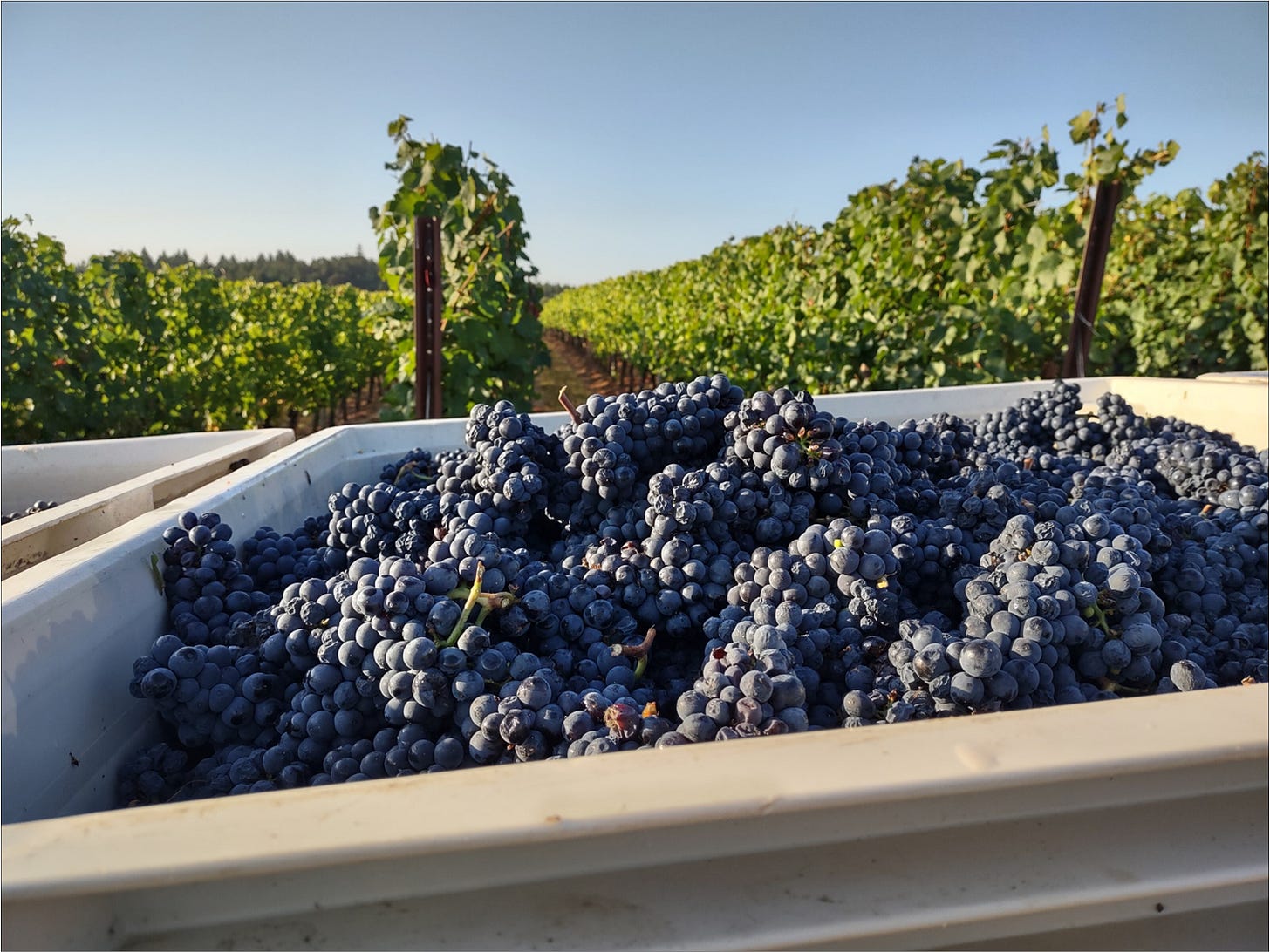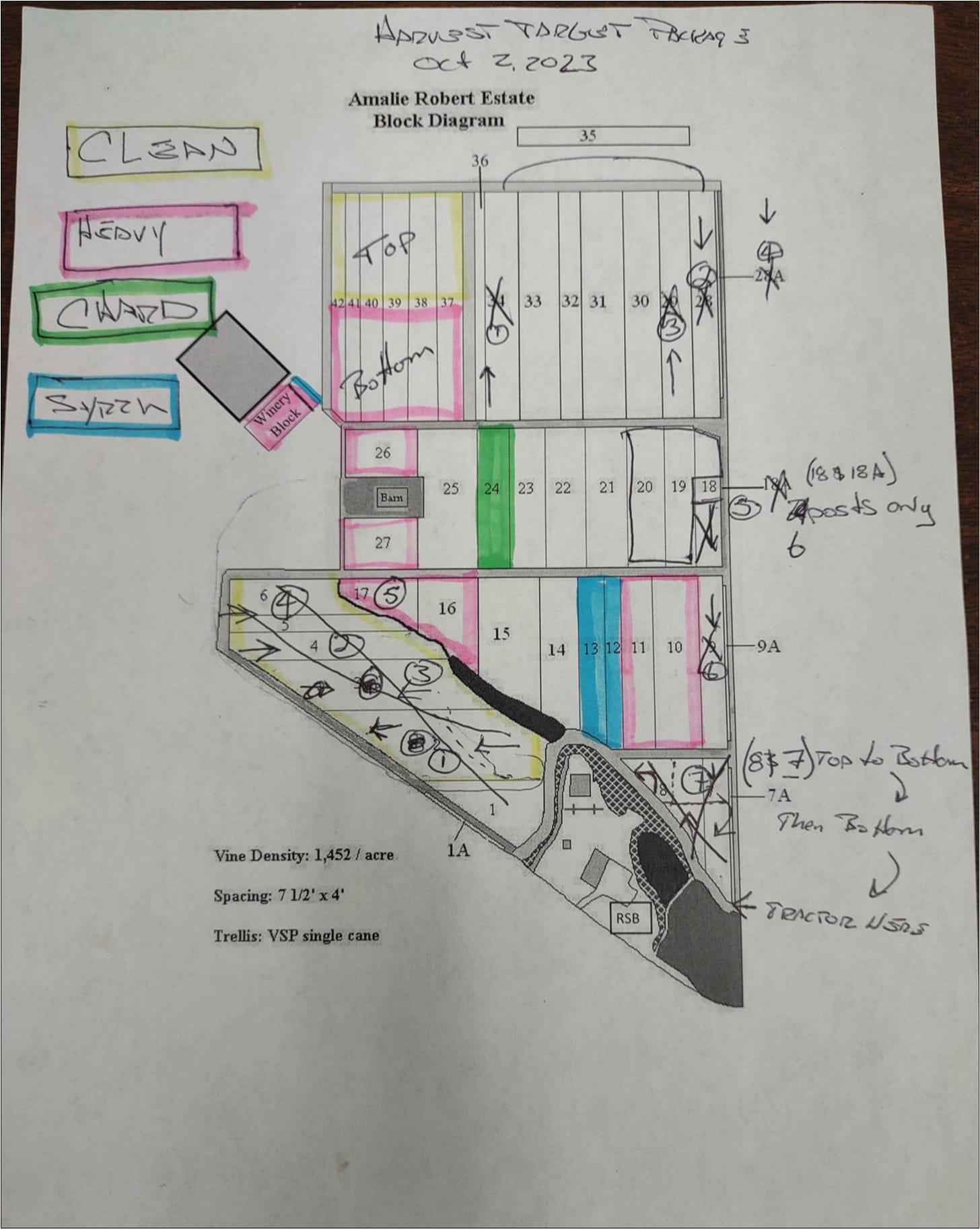Vintage Update: 2023 Harvest After Action Report (HAAR)
Hello and Welcome,
This is the Vintage 2023 Harvest After Action Report (HAAR) from Amalie Robert Estate, aka “You’ve Been Cluster Plucked!” Planted at the turn of the century, Vintage 2023 marks the 22nd Willamette Valley Pinot Noir harvest at Amalie Robert Estate. What follows is a brief photo journal of Vintage 2023. Approximate reading time is 1.87 Adult Recreational Beverages. Looking for our website? You can find us at amalierobert.com!
We have been here and done that, repeatedly. And those past experiences brought perspective. A helpful insight, or the voice in your head, as the fog of harvest unfolds around us. Every decision we have made throughout Vintage 2023 contributed to our success, although we must admit some decisions contributed in a more positive way than others.
iPinot® Pinot Noir 6-Pack Digital Offer
iPinot® Pinot Noir - a reserve level wine without the reserve level price. iPinot® Pinot Noir is created from reserve quality barrels of wine selected for our “Hers and His Reserves” - Amalie’s Cuvée and Estate Selection Pinot Noirs. Once the final “Hers and His Reserve” wines are blended, we have a few reserve level barrels of wine left to blend. We blend these cellar worthy barrels of wine together to create iPinot® Pinot Noir - a reserve level wine without the reserve level price.
Experience cellar worthy, Willamette Valley iPinot® Pinot Noir by Amalie Robert Estate. We are offering select vintages of iPinot® Pinot Noir for our 6-Pack Digital Offer!
Where to Begin?
As this is farming, we begin at the end – of LAST year. Soon after cluster plucking is finished, the leaves begin to fall, and the vines go dormant. Ernie’s job is to get out there and drill in our fall cover crop before the heavy fall rains come. Those little pea and oat seeds will germinate with the fall rains and serve two purposes. For the seeds that are not eaten by the quail or other nefarious rodents, they will germinate and grow roots that will help hold our sedimentary soil onto the hillside during the fall rains. For the rodents that abscond with our cover crop seeds, they are simply converting them to a different type of nutrition – for the ever present and watchful red-tailed hawks.
The peas will fix nitrogen onto their roots as they grow into the spring. The oats are “Johnny on the spot” and will uptake that nitrogen and hold it until Ernie returns with the rototiller. And then, just as the spring rains diminish, Ernie incorporates all of that biomass back into the soil. The worms and microbes feast (compost is such an unpalatable word) and thereby release all of these nutrients back into the soil.
And here is where we come full circle. The soil is the plants stomach. When spring rolls around, the vines have been asleep for 6 months, and they are hungry! A big breakfast of spring tillage sets them up for the growing season. And no chemical fertilizers are required. We grow our own.
As all of this soil work is happening, we are also getting busy above ground with pruning.
Pruning is an arduous task that takes place in the winter months. Wind driven rain is just miserable. The goal is to remove all of last year’s canopy, select a single cane for this year and tie it down to the fruiting wire. And after we do that to about 53,000 vines, we are done. Then we wait, and watch the red-tailed hawks collect on the heretofore missing cover crop…
GRAPHIC CONTENT
One significant event from the winter of 2022 is worth mentioning. And that was the massive freeze we experienced during December. Yeah, it was really farmin’ cold and dry. The AccuWeather graphic shows 2 significant December weather events. The first is the 13th through the 17th and the second is the 21st through the 24th. The solid blue line is the average low of around 36 degrees. We seriously missed that mark.
We continued to have groups of days below freezing here and there in January, February and into March. The vines’ schedule is to bud out in April. Those below freezing temperatures did impact some vines. The primary buds did not push normally, and we had stunted shoots in some areas of the vineyard. The result was a canopy that more resembled one of Roger’s shrubberies. Fortunately, this impacted a very small number of vines, less than an acre actually.
Springtime in Willamette Valley Wine Country!
Spring is a glorious time of year. Mother Nature lavishly splashes her colors and textures all over the countryside. The Pinot Noir vines wake up and we begin the growing season with bud break. We saw the first vines opening their buds to growing season 2023 on April 30th. The average date for this vineyard event is the 15th of April. But as we mentioned, it was a cold winter and late spring.
On a personal note, as we age we have come to appreciate that some tasks and activities are going to take a little longer. This can be a good thing, depending on whether it is a task or an activity. An Adult Recreational Activity, in particular.
Due to the transition from a wet winter to a dry summer, with very little spring in between, Ernie missed the opportunity to rototill in the fall cover crop from 2022. Our sedimentary soil offers a brief window as it transitions from winter rains to summer drought. But since there was very little spring, we went right into drought mode. If you are too late, the soil becomes as pliable as age old concrete. Not good for the equipment or equipment operator. But it has a tendency to keep the repair facilities busy.
And our cover crop seed supplier could not source any buckwheat this year. Buckwheat is a magical plant that does all kinds of wonderful things for the soil and the vines. So, no rototill and no spring cover crop. Sorry fellas, not this year. We kept our fall cover crop growing into the summer. There was a small uprising in the rodent world, but the red-tailed hawks were vigilant.
A Big Bouquet
Our next key event is flowering. Flowering is always a bittersweet event. If it is rainy and windy, generally crappy pollination conditions, we worry about not setting enough fruit. In a warm vintage, a short crop load can lead to excess sugar accumulation without commensurate aroma and flavor.
Conversely, if it is ideal pollination weather, the stems will see more flowers pollinated and a heavier crop load. As humans, we generally eat with our eyes, and a bigger portion usually looks better. But as we will see in Vintage 2023, a tightly packed cluster with too many wine berries is inviting trouble.
Nonetheless, 53,000 vines with about 30 clusters each covering 35 acres produces one helluva bouquet of flowers! Our first flowers for Vintage 2023 were spotted on June 9th in Dick Erath’s clone 95 Pinot Noir grafted onto 5C. Typically, flowers open on the 15th of June. While we were a little behind the curve in bud break, we made up some time in flowering. But Dena’s birthday still happens on the 5th, and she was treated to a HUGE bouquet of flowers – Pinot Noir flowers that is. And the weather was just glorious, which made for a highly effective fruit set. Lots and lots of little wine berries.
Canopy Management 101
Here’s the thing about farming. With very few exceptions, you are always repeating the same class from last year. There is no progression to Canopy Management 201 or 301. The vines are pre-programmed, and with little exception, are going to do what they have always done. As the winegrower, you know what is coming. It’s the same exam as last year. The exercise is how you respond to the unique challenges of the vintage.
Despite our previous tech careers, and Dena “The Pixel Queen” dabbling in social media, farming is labor intensive. Well, labor, farm equipment and diesel, but labor mostly. So when you design a vineyard and trellis system it is important to remember who is actually going to be using it. Hint: It is not the person that designed it.
The first morning is training. Anywhere from 10 to 20 people arrive at 5:30 am. Fortunately, we have found a very good labor contractor that actually cares about our success. The key here is that you have the SAME group of people each day.
We run 3 sets of movable wires, but are only working with two sets at any one time. The idea is to straighten out the shoots, clip them in place and move down the row to the next vine, which is conveniently spaced just 4 feet away. Once their training is complete, everyone gets their own row, and we see how it goes. Our lead field man is the sheep dog. He is the person that goes row to row, person to person to help those who may need it.
And so it goes. The vineyard is about 212,000 lineal feet if all the rows were placed end to end and we work it three times. That’s a total of 636,000 lineal feet, or about 706 football fields. Say, how ‘bout those Kansas City Chiefs, and Taylor Swift?
The first wires come up and second wires go down. Then the second wires come up and third wires go down. Finally, the third wires come up and we can dismiss the field crew, because humans and hedgers are not a good combination.
Vineyard Mechanization, Sort Of
The only mechanization in the vineyard is the hedger. The vines, if given the opportunity, would grow out their shoots to 15 or 20 feet long, or longer. What a mess that would be. Also, from a practical point of view, by hedging off the shoot tips, we direct the vines to divert their energy to ripening their seeds. They don’t know we are making wine; they are just trying to reproduce.
The vines’ response to hedging is to simply push out lateral shoots. These shoots grow out the sides of the canopy, as if we are not going to notice them. So, the second pass trims the tops of the shoots that were too short on the first pass and the lateral shoots coming out the sides.
And then the unthinkable happened…
The hedger runs off the tractor’s hydraulic oil circuit. That circuit is comprised of the tractor’s diesel engine that drives a hydraulic pump, oil cooler and the various and assorted hydraulic hoses and valves that get the pressurized fluid to the drive motors that turn the big cutting blades. It could probably be replaced with a big farmin’ battery and electric motors, but technology is a cautious suitor in the agrarian world.
When you suddenly smell hydraulic fluid while you are hedging, that provides your first clue that something is amiss. This year, Ernie’s maintenance program changed all of the tractors over to synthetic hydraulic oil, and it just so happens to be red. When Ernie got to the end of the row, he was mortified to see the front of the machine hemorrhaging RED hydraulic fluid. He had been Tractor Woozled!
Fortunately, the tractor shop is downhill from the vineyard, and it was a “gravity flow” type experience getting it there. Repairs ensued forthwith. Well, there may have been a few choice words and a couple of farming beers in there somewhere. No one can quite remember the exact chain of events. But the hedger was eventually restored to its full functionality and a third hedging pass was completed. The Tractor Woozle remains at large. Along with the Computer Heffalump that ate our hard drive. Probably hanging out with the Sock Monster…
Playing Poker Against the House
Once the trellis wires are up and we have that first hedge under our belt, we have turned the corner on the vintage. Despite what we think, the calendar now reads July and is rapidly trending toward August. If you play poker, winegrowing is like playing 7 card stud against Mother Nature. And there are more than a few wild cards, but you never know which ones they are going to be.
The first 4 months of the growing season are April, May, June and July. At this point here are 3 cards left to see and those are August, September and October. Sometimes Ernie can stretch it out until November, but his deck is shuffled a little differently than most.
The first 4 months of the growing season registered 1,427 Degree Days. Degree Days are a measure of how much heat the vines have accumulated since the growing season began on April 1st. After all of these years, we still find entertainment value in the fact that the first day of the growing season is also April Fool’s Day. Coincidence, causation or correlation. That is a choice left up to the reader.
This Degree Day chart through July 31st lays out where Vintage 2023 measures up to the past 20 vintages. While past performance is no guarantee of future results, it does give us an idea of where we are in the growing season. Rainfall is the other factor that we consider. The winter rains stopped in early April and the growing season went dry through July 31st, and the vines are unlikely to see much rainfall in August. September yes, and that is the worry.
But hey, it’s summer. The vineyard is pretty much under control and the dog days of summer are upon us. It was a sad day in Margaritaville when we heard the news about Jimmy Buffet. So, we broke out the blender and made up a pitcher of that “frozen concoction that helps me hang on.”
It Just Got Real
It all kind of runs together until we see the first Pinot Noir berry turn color from green to pink to mauve. And that happened on the 5th of August, Pinot Noir In Flagrante as we call it. Just about 2 weeks ahead of schedule, but not a surprise based on the early flowering date. Our job at this point in time is to thin off any excess crop before harvest. Some vines just have too many clusters, others are about right. The Syrah always takes a hit. About 2 out of every 3 clusters get thinned off. Too much fruit, and it will never ripen.
August also brought with it record heat and a little rain. Let’s talk about the heat first. The high temperature for the growing season was 106 degrees recorded on August 14th at 3:48 pm. We had accumulated 2,073 Degree Days through August. This was all within accepted parameters for Vintage 2023. We began to pencil in a mid-September harvest window.
But then it rained. The last couple days of August gifted us about 0.60 inches of rain. The last meaningful rainfall of 0.30 inches was recorded on May 6th. Initially, we believed this would lower alcohol potential and extend hang time to develop better aroma and flavor. We looked upon this rain event in a favorable light, for a while. As the vines brought this soil moisture up through the roots into the berries, that’s when the trouble began.
A few things were working in the background leading up to September. In the vineyard, the clusters were densely packed from a high pollination rate. All of that great weather turned a very high percentage of flowers into wine berries. Pinot Noir is known for forming a tight cluster, and this year even more so.
Pushouts are what happens when the berries swell during ripening and get pushed off the stem. Just imagine a balloon blowing up and increasing circumference. That August rain helped pump moisture back into the wine berries. When the wine berries are all so tightly packed there is just no more room, they can get pushed off the stem, or split open. This results in compromised fruit and exposed juice. And ants, but that is mostly inconsequential. Unless you are an ant.
You’ve Got Bot
Botrytis is a late season pathogen that spells disaster for all wine berries, but Chardonnay and Pinot Noir especially. Botrytis needs moisture to grow, and the late August rains obliged. Typically, botrytis spores are dormant in the center of the cluster. They only begin to grow in the presence of moisture or high humidity. And they like it warm, above 65 degrees. That was exactly the conditions the late August rainfall provided. And since the clusters were so tightly packed, they retained moisture enabling a botrytis infection to advance.
Our first harvest day was a couple of weeks after the August rains. We began The Great Cluster Pluck on September 18th. Our canopy management labor contractor also provides our pickers, and their 5-gallon buckets. While machine harvesting is happening more frequently in the Willamette Valley, we are strictly hand picking all of our wine. It became quite clear on that very first day that botrytis was present. We implemented a compromised fruit harvest protocol RFN (Right Farming Now).
Our objective was to prevent any compromised fruit from entering the winery. Our first step in achieving this objective was to educate our pickers as to what botrytis looked like and to avoid picking it. But they are there to pick grapes, that is how they make their end of the season money. It’s not their fault the fruit is compromised. But still, they tried to accommodate us.
Our second opportunity is at the harvest bin when they bring their 5-gallon buckets. As best as we can, we are sorting out compromised fruit as the buckets are being emptied. The third and final sorting happens in the winery. Each harvest bin is evaluated, and the clusters are sorted a third time before they make it to a fermenter. The rest is compost.
Vintage 2023: My Name is Triage
As September unfolded, we experienced warm rain. Starting overnight the 23rd, we received 0.42 inches of warm rain. It continued to rain for the next 40 days and 40 nights, or so it seemed. The rain finally let up on September 30th after delivering 3.34 inches in that one week. Botrytis likes warm rain. The warm wet weather increases its growth rate, and it never sleeps.
We accumulated 354.5 Degree Days for the month of September. The high temperature was 92.8 degrees on September 15th at 4:24 pm, and the low temperature was 41.9 degrees on September 21st. Growing season Degree Days through September totaled 2,428. Rainfall for the month of September totaled 3.67 inches.
Our next opportunity to harvest was October. And we approached the October harvest window opportunity a little differently. We began by accepting the fact that we would not harvest all of our vines. It was a bitter pill to swallow. We needed focus and attention to detail. And a new harvest strategy.
Ernie pulled out the vineyard diagrams, which he highlights in color, to review potential harvest target packages. Our 35 acre estate vineyard is cut into 44 small blocks. Each block is a unique clone and rootstock combination. Some areas of the vineyard are vigorous, and more susceptible to botrytis. Other areas not so much. The Chardonnay was an early casualty, it can’t take the rain.
As we strategically selected blocks to harvest, we were constantly monitoring the level of botrytis. While most blocks we chose to harvest were clean, we tucked into a block of Pommard that was not. Ernie called an audible and that was the end of that. We moved to the next block in the harvest target package and began again.
Rain continued to fall in October, and the temperatures continued to be above average. The first week, not so bad, only 0.17 inches. The second week added another 1.20 inches and by the 21st of October we had logged another 0.83 inches of rain. That’s 2.20 inches for the first 3 weeks of October. You know you are finished harvesting when you are throwing away more fruit than you are keeping. Our final harvest day was October 19th, when we cluster plucked the Syrah.
We accumulated 167.9 Degree Days for the first 19 days of October when our harvest window closed. The high temperature during that period was 86.2 degrees on October 6th at 2:48 pm, and the low temperature was 40.5 degrees on October 1st. Growing season Degree Days through the completion of The Great Cluster Pluck totaled 2,596. Rainfall during this period was 2.20 inches.
Final Thoughts
Vintage 2023 was about as picture perfect as you could hope for, until it wasn’t. The growing season was moderate to warm. Our field work was timely with good quality. The farm equipment provided its usual unfortunate, but not uncommon contribution. We detected botrytis and modified our harvest practices to mitigate any compromised fruit. While we were “all hands-on deck”, the 7th card of this deck was in the House’s favor. We knew when it was time to fold and did not force a bad situation.
Wine represents a culmination of all events from bud break through harvest, barrel aging and bottle maturation. As we are pressing our 1.5 ton fermenters, we are seeing very dark color and smelling vibrant, and intense aromas. There is no sign of botrytis in the wines. If there were, we would know it by now. And yes, we did take the Syrah and Viognier. They are both still fermenting and showing great promise.
Success leaves clues. In most other endeavors we would say opportunity favors the prepared mind. In the agrarian endeavor, we have come to accept that is better to be lucky than good. But what we are saying right now, is that what we chose to harvest and ferment is just stunning! So far, so good!
But that’s farming, hope for the best and plan for the worst. And DON’T bucket up!
Kindest Regards,
Dena & Ernie





